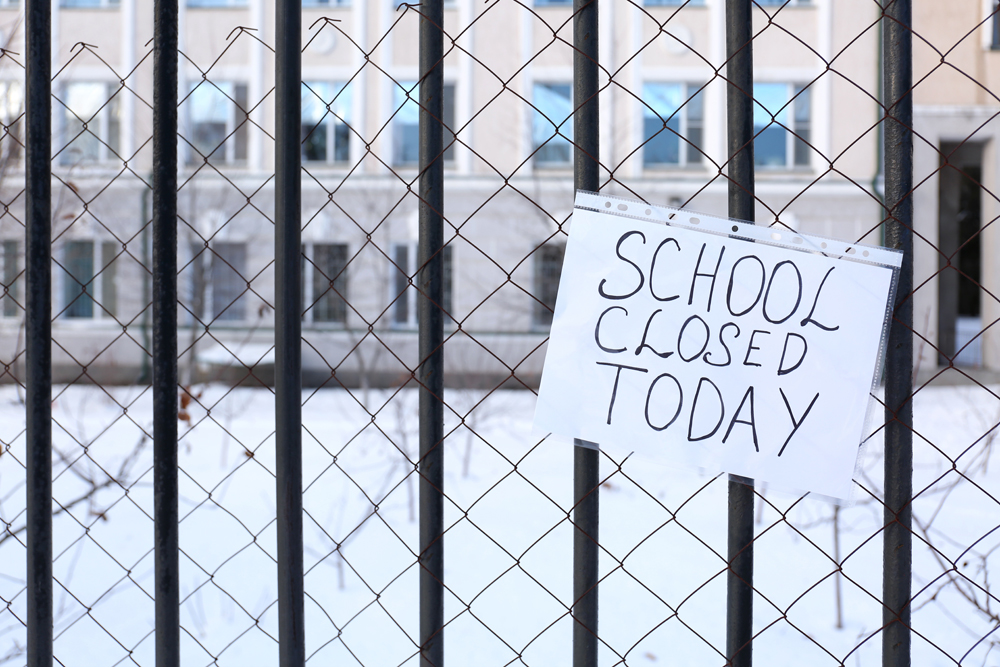Until recent years, school snow days were an exciting opportunity for kids. They had no class work to do and could play or lounge in front of the TV all day long. Many schools are starting to change that by making the classroom accessible from home with eLearning. What was once a bonus day off is now a normal school day that children can attend in their pajamas.
Indiana Schools Adopt eLearning Tech for Snow Days
School districts throughout Indiana are delving into the realm of eLearning. Over 270 districts currently use the technology to supplement their traditional curriculum. South Dearborn joined them this year.
On a normal day, students can take quizzes and complete activities on their school-issued Chromebooks. The laptops have been in use for three years. Learners can complete work on them in class and at home.
South Dearborn school district is experimenting with eLearning by organizing its first “eLearning Day,” which will commence in a few weeks. Students will stay home and are required to access and complete assignments to see how well the system works. The idea came about as a way to reduce the effects of inclement weather and other unexpected occurrences that prevent students and teachers from coming to class.
The district had eight canceled school days last year because of bad weather. Three resulted from flooding that made commutes dangerous. Principal Dr. Jeff Bond stated that he believes eLearning Days will benefit the students. “We see this as just a piece of how we provide instruction at South Dearborn.”
eLearning Days will have a limit, so students will still be required to return to class for most of the year. The district has set a three-consecutive-day cap on eLearning days. This is intended to ensure that students receive the traditional learning and social experiences that they get from physically going to school. Dr. Bond explained that “interaction with our students and teachers is so critical we would lose out if we exceeded three days.”
What Does an eLearning Day Look Like?
eLearning Days are structured much like a normal in-class day. The Indiana Department of Education uses data to determine where learning gaps or weaknesses exist. Through state and local formative assessments, they find the areas that need more practice and build content based on those topics.
The student is still guided, even though they do not have a teacher in the room with them. A series of lessons are loaded into the classroom management program, which is a system teachers use to distribute learning materials.
Students start with the first items on their daily schedule and work through the list. Content isn’t limited to math, science, and literature. They also receive learning content related to specials like band, music, physical education, and art.
eLearning Days Aren’t a Done Deal for Some Parents and Students
While many students love the idea of staying home to learn, not everyone is on board with the concept. Families that live in rural areas with little or no internet access don’t have as many options when it comes to eLearning. Schools shared a list of locations that provide free internet access and students have been granted extensions to complete related assignments.
Indiana’s schools issued a poll to each household that asked if internet access was available to the student who lived there. The district makes lessons available to download ahead of time as an eBundle to accommodate those who do not have an internet connection. They also issue paper packets with lesson content for learners who have no computer or device to work on. This is intended to give all learners the same opportunity to keep up on eLearning Days.
Some parents look at this change as a nightmare rather than a benefit. Those that have to go to work may have issues finding childcare for younger kids who are in school. Other adults are already telecommuting and may not have the time to keep up with the responsibilities of childcare during work hours. Some believe this policy only benefits the school’s administrators and accountants.
A Washington Post Letter to the Editor penned by Melissa Mathews of Arlington suggests “Let’s ditch the computers and encourage children to learn by spending an age-appropriate amount of time reading a book – after they’ve built a snowman.”
Letter to the Editor: https://www.washingtonpost.com/opinions/e-learning-on-snow-days-is-a-nightmare-for-parents-too/2018/08/08/6ef57c74-99b8-11e8-a8d8-9b4c13286d6b_story.html?noredirect=on&utm_term=.4aeaf38b53eb
Do the Benefits of eLearning on Snow Days Outweigh the Challenges?
Every family’s experience with eLearning will vary. Today, far more neighborhoods have access to a reliable internet connection. More children and teens own and use tablets, computers, and mobile phones. Technology has become an integral part of our lives in many ways. The number of people who don’t have web access is gradually decreasing. It’s only natural that schools would get on board.
While many have very real concerns, schools are doing what they can to address them. There are benefits, like children continuing classwork to avoid falling behind in their studies. eLearning Days mean that students won’t have to make up missed snow days later in the year when they would normally be on vacation.
Indiana schools also use eLearning Days as a way to extend teacher office hours. Since they are not physically in class, educators are asked to dedicate three hours of each eLearning Day to use as virtual office hours. This includes two hours in the morning and one in the evening to make them available to students or students and their parents who may not return from work until later in the day.
Making the Most of eLearning Days
Attendance is still tracked on eLearning Days by monitoring discussions, participation, and completion of assigned work. Students who cannot use the internet will have their attendance updated when they return to school and submit their completed lessons.
One of the surprising things the school district noticed is that eLearning has increased student communication skills. Learners are more capable of articulating questions in a way that gets them the answers they need. There has also been an increase in collaboration among students.
Many students enjoy the freedom of online learning, which lets them have more say in how they manage their time. Younger students tend to wake up early in the day so that they can finish their work earlier. Meanwhile, older students who prefer to sleep in can do so and work later in the day or into the evening.
eLearning has proven that it can help minimize disruptions to the school year and give learners opportunities to grow and improve. While there are some drawbacks, so far, the benefits outweigh the shortcomings.








